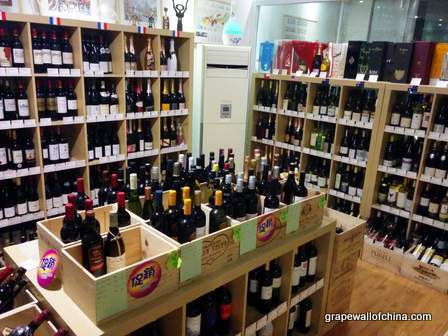By Jim Boyce | What company imports the most wine in China? It’s a question I get every year when I post about the top ten countries that supply wine. Many people might guess ASC, which has been around two decades and has a high profile, or Pernod Ricard, given it is a global player, or Aussino, with its affiliated restaurants and shops throughout China. The reality is that many top importers have names most of us have never heard, names like Shenzhen Storage and Logistics Import and Export Company, and are often handling supply chains for supermarkets, hypermarkets, online retailers and others. In any case, here are a dozen rankings from 2016, including some more familiar names out there.
1 | C&D | ~16.3 million bottles
C&D is a huge company that particularly focuses on supply chains and real estate, with wine just one part of its business. It handles everything from major producers, such as Castel and Gallo, to Grand Cru labels. Its import volume increased by 62 percent in 2016.
4 | ASC Fine Wines | ~8.1 million bottles
Of the foreign-invested distributors that started about 20 years ago, ASC is easily the largest, although it had only one-third of the volume of C&D in 2016. ASC represents more than 100 wineries from 16 countries.
6 | Changyu | ~7.1 million bottles
China’s biggest producer is increasingly playing a role as an importer, including with wine from operations it has bought overseas. It’s import volume tripled in 2016. Look for further gains as it purchases more wineries.
7 | Nanpu | ~6.9 million bottles
Its partners include U.S. mass producer Carlo Rossi.
22 | Summergate | ~3.5 million bottles
Bought by mega-Australian liquor company Woolworths in 2014, and now handling mass brands like Penfolds, it remains just outside the top 20 and saw a dip in volume in 2016.
29 | Torres | ~3.2 million bottles
Family-owned Torres is a bit of surprise at number 29, holding its own against much bigger operations. It also saw a small dip in 2016
33 | WalMart | ~3 million bottles
One of numerous supermarket and hypermarket chains importing wine. It has stores throughout China and created an alliance with e-commerce giant jd.com last year, during which its import volume rose 150 percent.
36 | COFCO | ~2.6 million bottles
Another key China-based wine producer, with brands like GreatWall, Yunmo and Sungod as well as overseas wineries. Its 2016 volume saw little change from 2015 but should rise if the expected purchases of more overseas wineries take place.
39 | Pernod Ricard | ~2.5 million bottles
A global player with a strong spirits portfolio, Pernod Ricard is also invested in the China wine industry via its Helan Mountain operation in Ningxia.
43 | Wahaha | ~2.3 million bottles
A major domestic beverage producer, known particularly for still water, Wahaha entered the imported wine business about five years ago.
58 | Metro | ~1.8 million bottles
Like Wal-Mart, Metro imports wines for its hypermarket chain in China.
67 | Aussino | ~1.7 million bottles
A 20-year veteran that imports 1000-plus labels from 13 countries and has a network of clubs, restaurants and shops. It saw a drop of 33 percent in volume in 2016.
Follow Grape Wall on Facebook and Twitter. Sign up for the free China wine e-newsletter below. Check out these wine books and sibling sites World Baijiu Day and Beijing Boyce.
